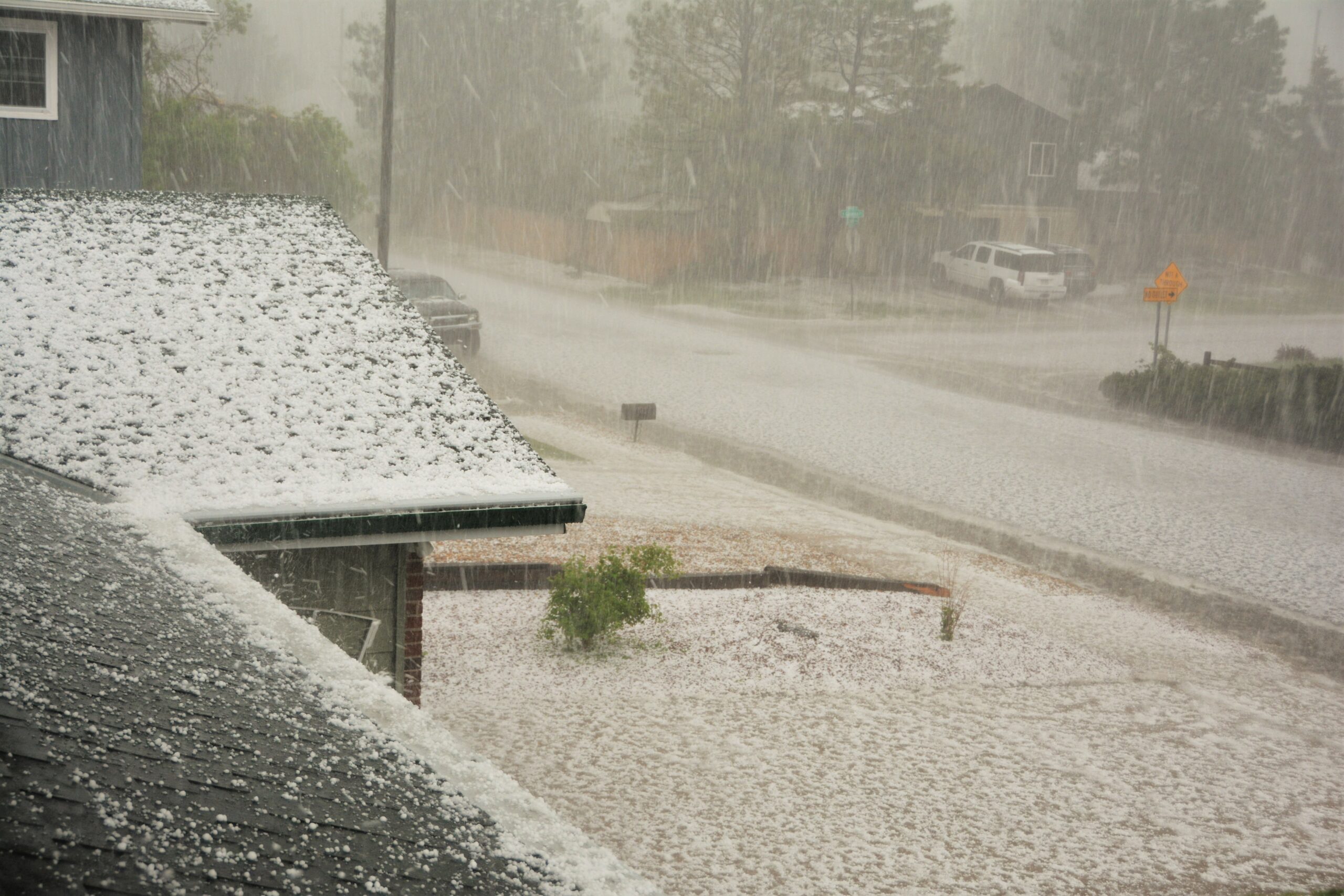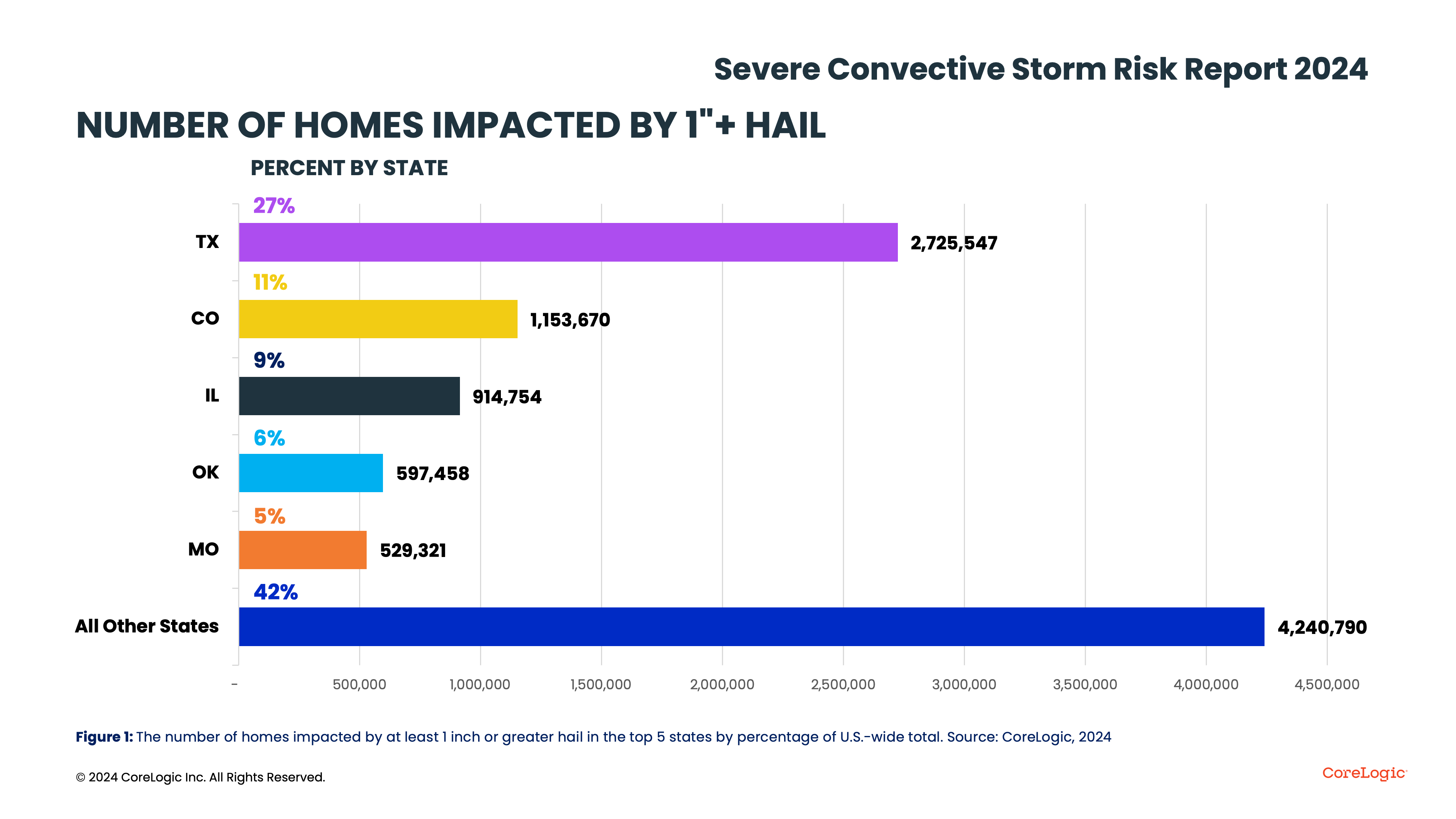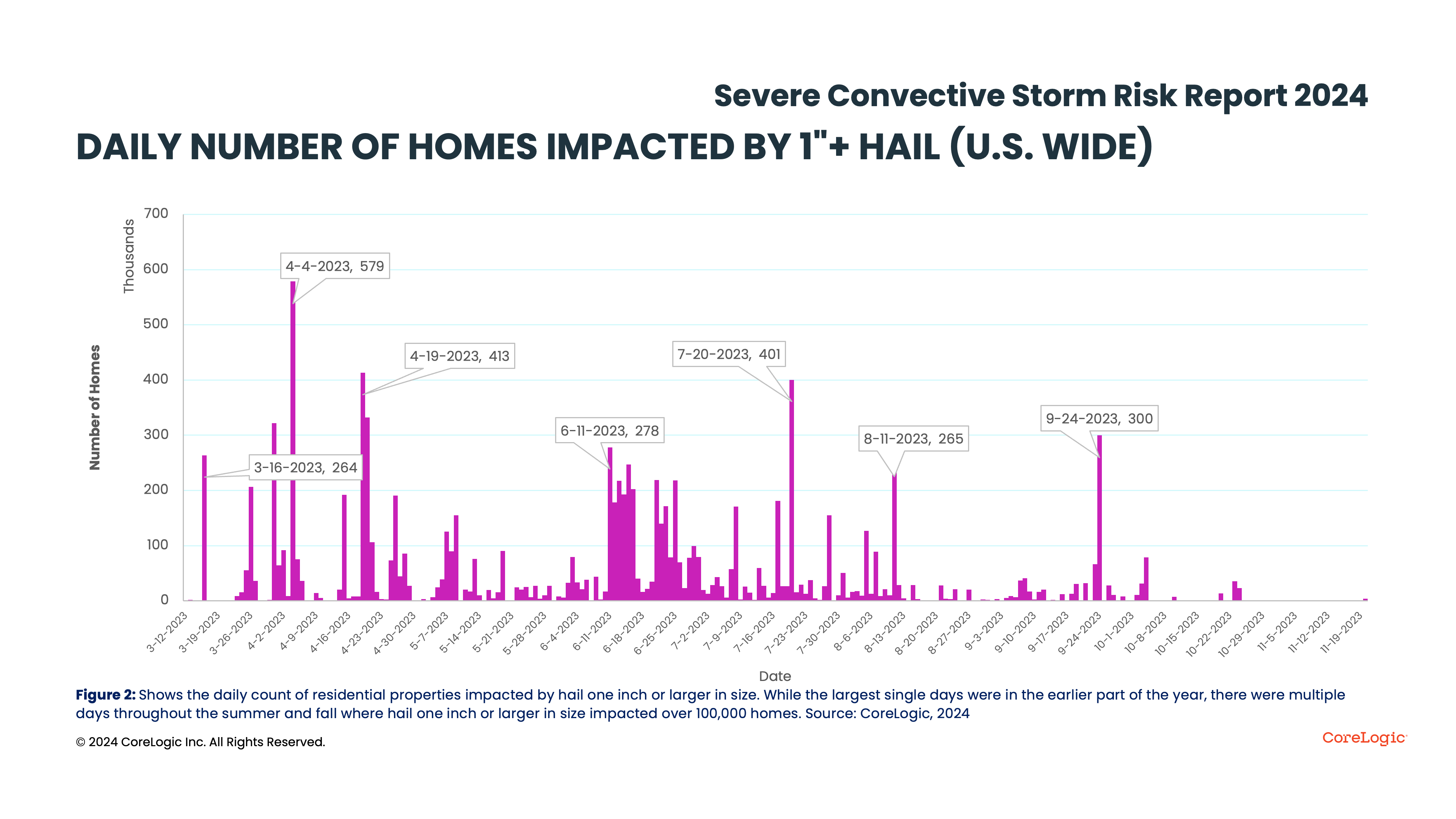- Home
- About
- Insurance
- Quote
- Dental/Health
- Service
- Notary
- News
- Referral Partners
- Agent Resources
Interested in Trends?
Get automatic alerts for this topic.

[ad_1]
Hail of two inches or greater struck the United States on 141 days last year — the highest number of annual days in two decades, according to a new CoreLogic report.
Severe convective storms generated “an unprecedented amount of insured loss on par with a single major hurricane” in 2023, CoreLogic shared in a press release. The main driver of insured losses was hail, the release said, because unlike tornadoes and straight-line winds, hailstorms are frequent, highly damaging and affect large portions of the country during a single storm.
“The degree to which 2023 was an outlier compared to history is seen in the number of single- and multifamily residential properties affected by hail,” the report said. “Hail of at least one inch fell on over 10 million single- and multifamily homes in the contiguous U.S. from mid-March through November 2023.”
That estimate does not account for homes impacted multiple times. More than half of homes impacted by hail of at least 1 inch or greater were in Texas, Colorado, Illinois, Oklahoma and Missouri.

Notably, CoreLogic reported that during a five-day stretch in June, straight-line winds and hail caused between $7 and $10 billion in insured losses in the Dallas-Fort Worth area. Hail alone was estimated to comprise 95% of losses, making it one of the biggest hail losses in history.
“If events like what occurred in mid-June become more frequent, then it will become imperative that carriers understand the factors driving the [increase] in risk,” the report said.
CoreLogic reported that last year’s severe convective storm activity was “likely influenced by quick changes to the oceans and atmosphere resulting from a multi-year La Niña which shifted to El Niño during the spring,” as well as the subtropical jet stream, which was particularly strong during the late spring and early summer.
The report also said it is “difficult to determine if a long-term warming of the atmosphere or changes in exposure are the primary driver of increased severe thunderstorm activity without a more extensive historical record.”

The report also found that exposure changes continue to exacerbate losses. While residential development has increased in states like Texas, Colorado and Florida, “these are some of the states with the greatest number of severe hail days in 2023,” the report said. Inflation-influenced building materials and repairs contribute to higher individual claims.
“Multiple factors, such as interacting climate and weather patterns, inflation and migration all have an impact on the unprecedented amount of insured loss caused by severe convective storms in 2023, and it’s an important trend to pay attention to,” said Jon Schneyer, catastrophe response director at CoreLogic.
He continued: “A home is often a person’s most valuable asset, and preparedness is key to minimizing damage from large weather events like thunderstorms and hail. Taking measures like upgrading a roof with impact-resistant shingles can help minimize potential damage and keep people and homes safe during storms.”
Topics
Trends
Get automatic alerts for this topic.
[ad_2]
Source link
Comment (0)